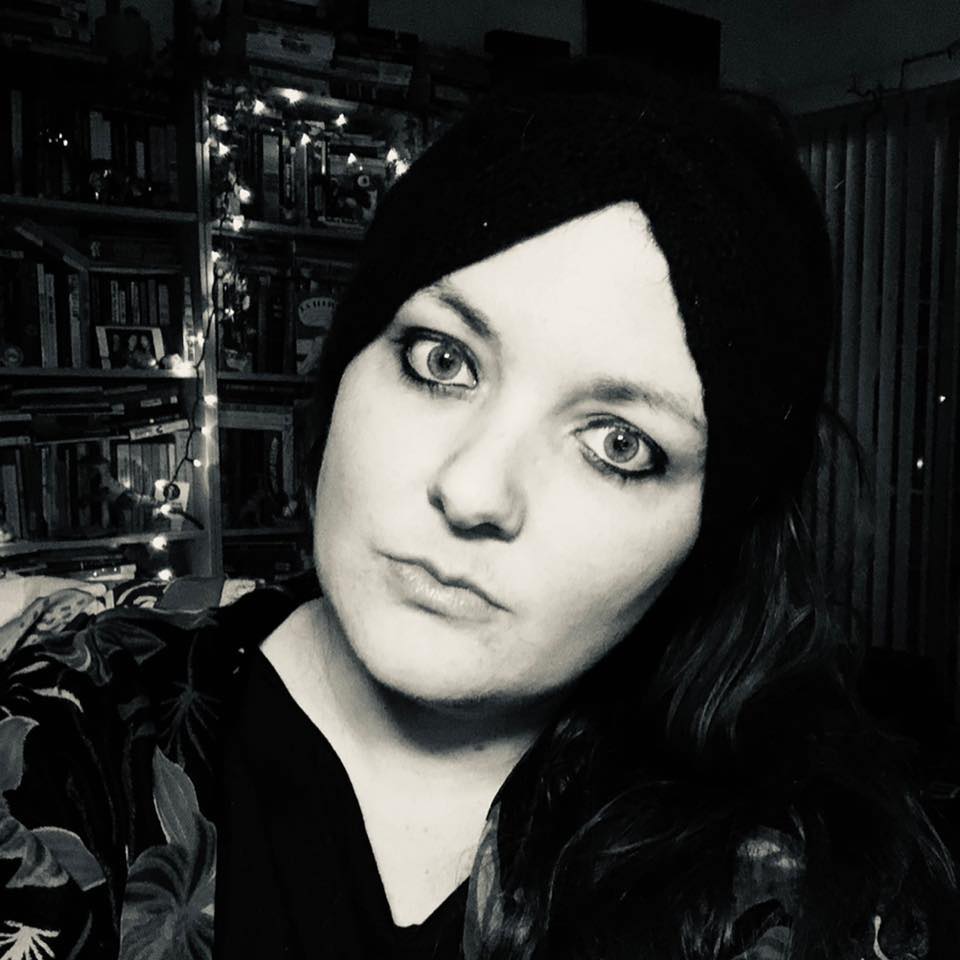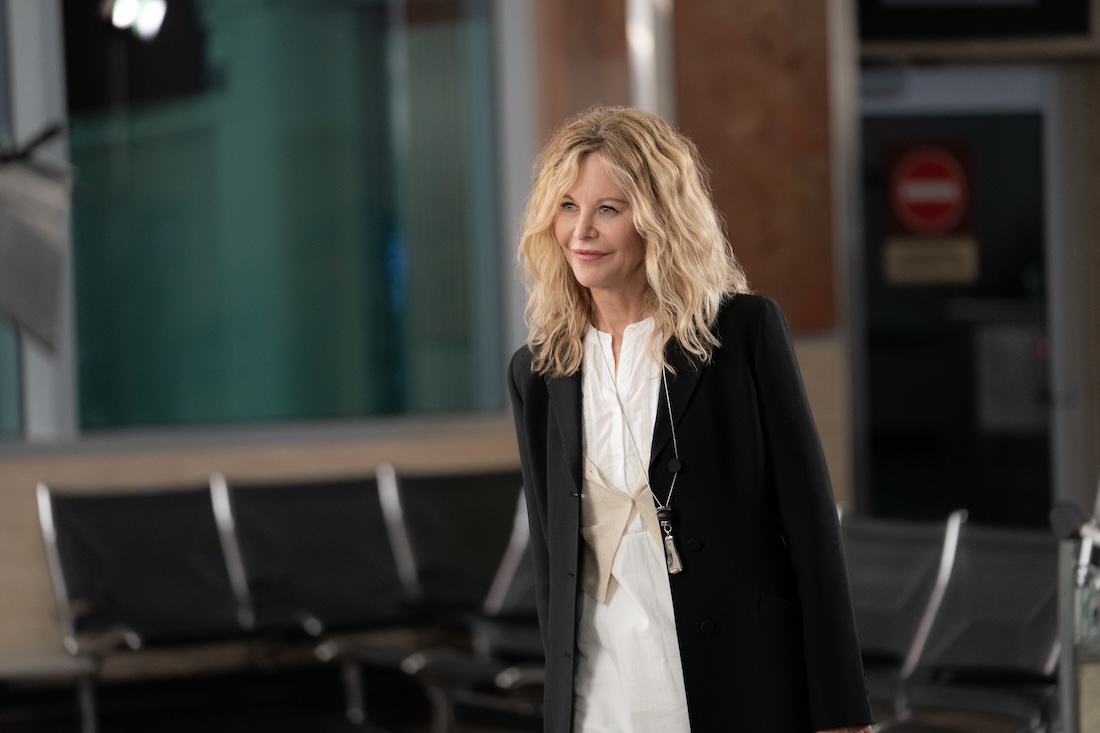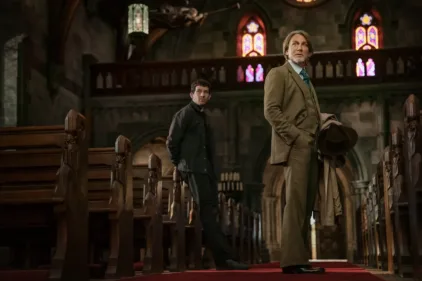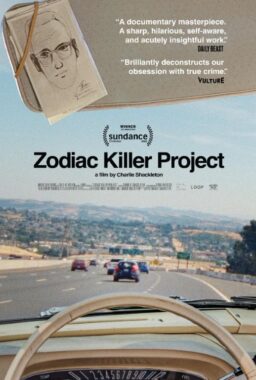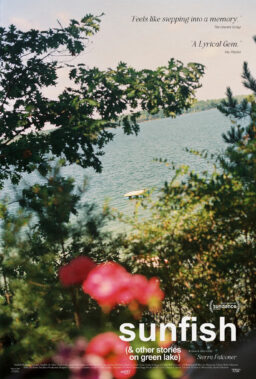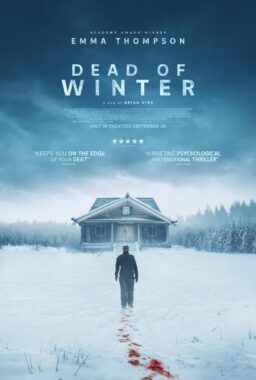Best known for her buoyant performances in romantic comedies like “When Harry Met Sally …,” “Sleepless In Seattle,” and “You’ve Got Mail,” and complex dramas like “When A Man Loves A Woman,” “City of Angels,” and “In The Cut,” Meg Ryan is a fearless performer and filmmaker who has beguiled audiences with her wit, charm, and emotional depth for decades.
After a short break from the screen, she returned in 2016 with her directorial debut “Ithaca.” An adaptation of the 1943 novel The Human Comedy by William Saroyan, the World War II set drama featured an impressive ensemble cast, including her son Jack Quaid, Sam Shepard in one of his final film roles, and reunited Ryan with her longtime co-star Tom Hanks.
With her second feature directorial effort, “What Happens Later,” Ryan returns to the romantic comedy world. Based on the play Shooting Star by Steven Dietz, along with directing, Ryan co-wrote the script and is one of the film’s two leads. She stars as Willa, a New Agey woman from Austin on her way to Boston who runs into her ex, Bill (David Duchovny, a master of effortless deadpan charm), after the two are stranded in a small airport waiting for connections delayed by a snowstorm. Ryan’s film is filled with magical realism as these two ex-lovers learn to slow down and reconnect with each other, themselves, and the things that are good in life.
For this month’s Female Filmmakers in Focus column, RogerEbert.com spoke to Ryan over Zoom about creating magical environments, liminal spaces, working with David Duchovny, and what she learned about directing romantic comedies from Nora Ephron.

How did you come across this play, and what about it spoke to you?
The playwright had written a draft as a screenplay, and that’s the iteration that came to me. It was right during the lockdown. It seemed like a very doable thing because it’s just two people and one environment that was mostly empty. So it piqued my imagination because it seemed doable, especially on a small budget. It just kept evolving and evolving, evolving. I got more involved with the writing, and then David Duchovny came on board, and then we got financing. I loved the idea of this magical world. I had been to Bentonville a couple of times and had gone to the Crystal Bridges Museum there. When I first read the script, I imagined it in a world like that. Not an airport, but just in a magical environment. Then we got to shoot there. Unbelievable. We got to shoot in that town, which I loved. That was the evolution. It just kept baiting me and hooking me and baiting me.
You have these two locations, the Crystal Bridges Museum and the Northwest Arkansas National Airport, that you combine seamlessly. Can you talk about that?
It was a liminal environment, meaning it’s a transitional environment that was dreamlike, somewhere between a memory and a dream, which is how you might think of an airport. Although an airport technically is a liminal environment because it is a space of transition. We wanted to slowly induct the audience into this magical world. And using both those elements, we were able to do that. And then, of course, when night falls, and again, given our limited resources, we had to make shiny floors, almost like they were walking on water. So we shot away from the windows, but when we did see a window, we have it snowing.
All the messaging in the airport we erased digitally afterward. All the advertising. Everything that seemed like gate numbers. Anything that located it as an airport. It was all super intentional. Then we added the typeface of the messages like “only connect,” or “time will tell,” or “everything is pending.” It was very lo-fi. Then, of course, we had the magical Hal Liggett, who is the voice of the airport. All of that was so fun. That magical reality part was so fun to cultivate. Everybody was really interested in making that work. Even the sound of the storm is Hal’s voice, all digitized turned into thunder, and his whispers are the wind. I mean, it’s very cool what they did.
You mentioned liminal spaces, and I was thinking about the kind of Muzak covers of light rock that make up the soundtrack. Especially as the Third Eye Blind one really took me out. That was amazing. But Muzak is also liminal. You hear it when you’re on hold, and these characters are kind of on hold. I’d love to hear how you kind of landed on those tracks.
One thing in the script that I brought to it as it evolved was how this airport is like getting under his skin, in a way. It helped him change. It’s gonna open him up. So the more irritated Bill gets, the better it is for the two of them, actually. Some people hear things differently than others. Like some people hear other people chew. So I love that Bill would hear that, and she wouldn’t. It just made me laugh that they would have just an essential auditory disconnect. She would not be bugged by the same things he is. Sheryl Crow was the first one who gave us her song, then Alanis, and then Tom Petty. All of these people were great. They trusted us to record these fantastic songs in the worst way possible. They were so game and great, and I am so grateful for every one of those artists for trusting us to understand that joke. They’re great songs that have been made mediocre by these cover bands that we made up called Beige and Neutral.
I found those band names hilarious when I was reading the credits. You also have the song “Pure” by The Lightning Seeds, which gets to remain how it actually is. I absolutely love that song. How did you land on that one?
Our music supervisor, Andrea von Foerster, knew of that song. It’s a song from the ’90s. How can you not dance to it?
It’s so beautiful.
Right? And these two characters are as pure and simple as they can be at that moment, you know, and I give over to it. I just love it. It’s such a beautiful offering to them from the airport because all the airport has been trying to do is get them to connect to the music.

Was David Duchovny your first thought for the role of Bill? How did he come on board with the film?
We had a lot of different ideas about who could play the roles. I was thinking of someone else for Willa for a while, but financing-wise, it was clear that I was going to do it. Then David has such a unique way of delivering anything. I’m not sure that I’ve ever seen him play someone this reactive to his environment before. I had an awareness of him as a really funny guy from “The Larry Sanders Show” and the little cameo he does. He’s just got such a unique sense of humor. To me, the only person I could ever compare him to is Walter Matthau because of this thing he can put on any line. We would sit in the editing room and just laugh and laugh and laugh. I didn’t really get to see any footage until then.
Did you do a lot of rehearsals? You two have such wonderful chemistry.
We talked a lot. We’ve talked over about ten Zooms over the course of about a year. Then he had just finished directing something else and came down to us in Bentonville two days before we started. So it was lucky that we got to be so familiar with each other, at least over Zoom. Then we went smack dab into it. We did the first scene where we meet I think, on the first day. Then we shot the argument after lunch. We shot in 21 days. We just had to be on it.
It’s such a banter-heavy film between the two of you. Were there any screwball comedies or anything that you watched for inspiration?
No, but banter is so important. Like for “His Girl Friday,” I remember reading that Howard Hawks would have Rosalind Russell and Cary Grant rehearse with pencils in their mouths so they could be super articulate. Since they are meant to be together, those two characters have the same rhythm, intellectually, and the same rhythm of banter. And the guy she’s not supposed to be with, Ralph Bellamy, talks not at all in the rhythm. So, I think these are part of why we love these movies has to do with banter. And that’s all about being rhythmic.

Obviously, you made several films either directed by or written by Nora Ephron. Was there anything you learned from working with her that you brought to the two films that you’ve directed?
I mean, probably all of it. She just had such joy in creating them, and she loved being there so much. Those days would end, and you wouldn’t want the day to end. You wouldn’t want the movie to end. I’m pretty sure we all felt that way. We didn’t want it to be over. So it was about the environment and keeping it like that. I once heard Hugh Grant say something about rom-coms being a balloon in a world of pins. And it’s true, like you don’t want it to be a world of pins. You want to keep the balloons floating in that. And Nora was great at that, keeping it pin-free.
What do you hope by the time the film ends that, audiences will take from the journey they’ve gone through with these two characters?
I feel like the audience for it now. I feel like we only finished it a month ago, but you have to separate. You’ve blown up the balloon, and you’ve taken all this care of it, and now it’s going out into the world. When I look at it, I just go, wow, these two people are in a fairytale circumstance in this journey to the heart. Like they have to do these impossible things, they’ve got to get their facts straight. They’ve got to be accountable. They’ve got to forgive. They’ve got to surrender before they go to this place that’s really quiet and that is full of love. So I hope it’s a heart opener.
I wanted to ask a little bit about directing yourself. You had a smaller role in “Ithaca,” but you did direct yourself a bit there. But the role in this film is much larger. Was that challenging at all?
Yeah, I don’t really want to do it again. I had so much fun acting in it. I had fun writing it, and I had a lot of fun editing it and making choices. We had to be very, very organized before we started shooting; I had to have a shot list. I had to know exactly what we were doing; to be free with David was the key. He’s been saying, and I think it’s true, there’s no directing happening. It’s kind of like letting these two people be free. To keep the environment free, get to the editing room and see how you can cultivate and cut something very alive. And it was lucky because most of his great takes were my great takes too. Which is good when there are a lot of two-shots and mediums, and we didn’t do a ton of coverage. It’s very alive for that reason. He always surprised me as an actor in the scene, too. So, I mean, other than it being the quickest way to be really tired of yourself for, like, a year. I can’t believe … I don’t know why I did it. Honestly, I can’t believe we did it. But we did!
I think you can see the joy of your performance in this film. You capture that as a director and as a performer.
Thank you.
Are there any films directed by women that either have inspired you in the past or that you love that people should seek out?
Oh wow, that’s a great question. I do have to say I don’t really think of it that way. I know there’s this idea of the female gaze being different from the male gaze. One thing that really surprises me, actually, about this movie is that men seem to take something away from it. They can’t believe it, but they’re crying. Men seem to really respond to it, maybe more than women. So I know I’m not answering your question. I’m very proud to be a woman director. I know there are so few of us.
Julie Taymor is a friend of mine. And I’m very grateful to her for a couple of insights that she has given me. One of the things she talked about was this Japanese idea of an ideogram. She says if you can distill your script, your story down to one sentence, or even one word, as a director, that’s going to serve you really well because you will always have the answer to thousands of questions. You’ll have this sentence, “My movie is about this.” Sidney Lumet said about “12 Angry Men” that he could distill that movie down to this idea of “listen.” We were talking about that, and she said the Japanese idea of an ideogram is that you can distill that even further to a symbol. For “The Lion King,” it was a circle. And that’s, like, powerhouse. I don’t know that that’s necessarily only a female idea. I don’t think it is. But it came to me through a fantastic female director.
